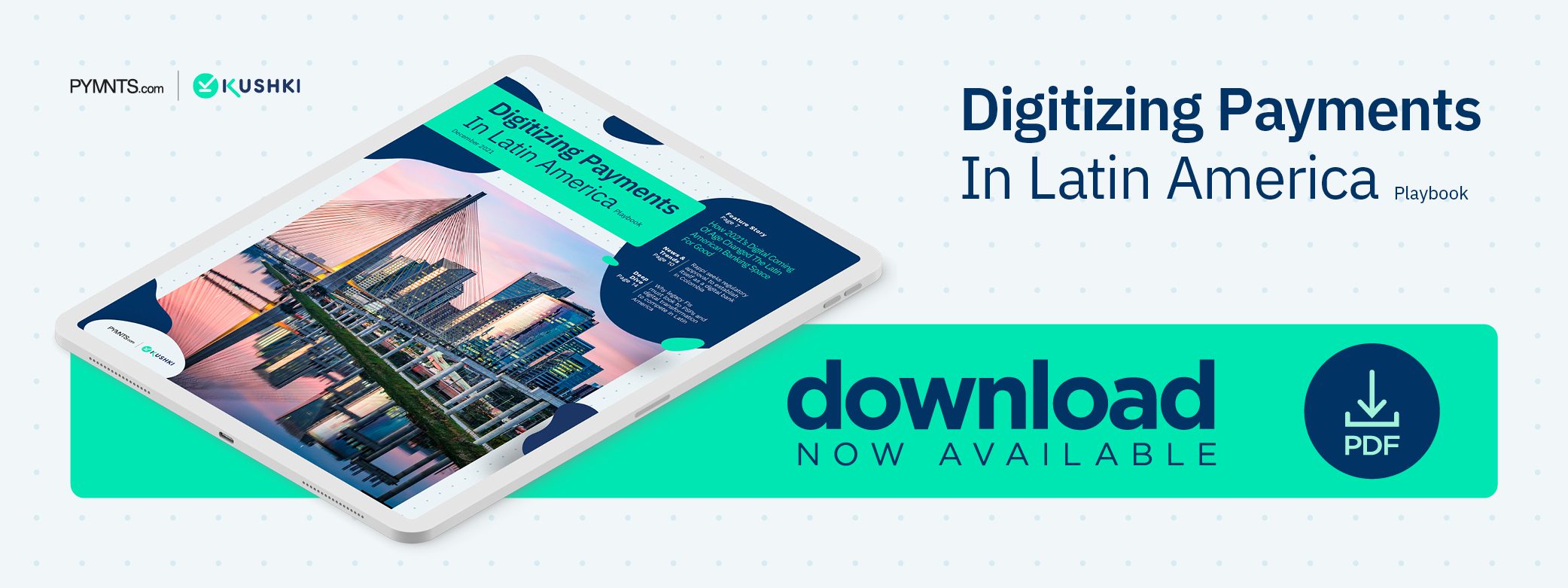How 2021’s Digital Coming of Age Changed the Latin American Banking Space for Good

Latin American consumers are ditching legacy banks in favor of service providers that better meet their mobile-first banking needs. In the Digitizing Payments In Latin American Playbook, Brad Liebmann, CEO of Brazilian FinTech alt.bank, discusses how outdated infrastructure is hampering the ability of legacy financial institutions (FIs) to satisfy consumers’ evolving needs.
Digital banking adoption expanded across Latin America over the past year, with a growing number of financial institutions (FIs), in addition to digital- and mobile-only FinTechs, vying for consumers’ attention.
Brazil’s five largest banks — Banco do Brasil, Bradesco, Caixa Economica Federal, Itau and Santander Bank — are taking steps to innovate their digital features to keep pace with these emerging digital-first challengers, according to Brad Liebmann, CEO and founder of mobile-only Brazilian FI alt.bank, which offers its customers a mobile banking app paired with a debit card.
“All of the big banks — the big five — have been focusing more on their digital [strategies] than they [had] been, to some extent,” Liebmann said. “But I think it’s FinTechs like us and the innovation that we’re driving that is forcing these banks to be more digital and improve the [user experience] on their apps.”
Creating seamless, mobile-optimized financial services is becoming vital to engaging and retaining customers in the market, especially as mobile-first solutions, such as the Central Bank of Brazil’s PIX payment system, become more popular. Legacy entities will have to pull out all the digital stops to meet newly digital consumers’ shifting needs or else see them turn to digital-native competitors.
The Dawn of the Digital Banking Age
Brazil’s legacy institutions may find it difficult to offer seamless online banking solutions for several reasons. Many of these banks — and many FIs around the globe — still operate on outdated infrastructure that makes it challenging for them to swiftly and easily develop and launch features, Liebmann explained. This is not the case for FinTechs or digital-only banks, which are designed to streamline A/B testing and the other developmental processes necessary to roll out cutting-edge features.
“If we have a feature that our customers want, we can prototype it and roll it out within days, where it takes [legacy FIs] typically a year or more, or months, to roll out a new feature,” he said. “We push new code to our app almost every day [while] they work in monthly [or] quarterly releases, and so they move at a much slower pace.”
Brazil’s top banks face other challenges when it comes to innovating their offerings swiftly. Partnerships between the country’s top five FIs and FinTechs are exceedingly rare at best, Liebmann explained, and many of these entities simply are not set up for easy change.
“When you have millions of payments per day running through a system on a big mainframe, changing how you work is a long process,” he said. “Putting aside how long it takes for a big company of any size to do a technology-related project when you’re dealing with these big legacy systems, it takes a while. That’s why almost all the big five have come up with a separate digital arm. … They’ve all come up with these different digital experiences to try to be a bit nimbler and react more quickly to the needs of their customers.”
Brazilian FIs must think differently about financial experiences and how consumers’ payment preferences will continue to shift if they want to succeed in the space. Paying close attention to online banking developments in other markets, however, could give them key insights into these trends and afford them advantages over their competitors.
Taking Global Inspiration
Observing digital banking developments around the globe could help legacy FIs in Latin America determine what they need to create cutting-edge solutions for their customers. Brazil’s central bank has incorporated this strategy as it continues to innovate PIX, Liebmann said. The system has witnessed rapid adoption since its launch in November 2020, and 110 million Brazilians since then have used it at least once.
“There are a lot of similarities between PIX and WeChat in China, for example,” he said. “But it’s clear to me that they’re going around the world, taking some of the best features of different payment systems and integrating them into PIX, which is enormously impressive because that’s something that none of the big five banks are doing themselves.”
Liebmann ultimately predicted that one of Brazil’s primary innovation drivers in 2022 will be its central bank, and the bank’s approach to eyeing other markets will be a determining factor behind its influence. Examining this strategy as well as how external partners, such as payments services providers (PSPs), FinTechs and similar entities, could help them execute it could be crucial for Brazil’s legacy FIs as they appeal to today’s digital consumers.
